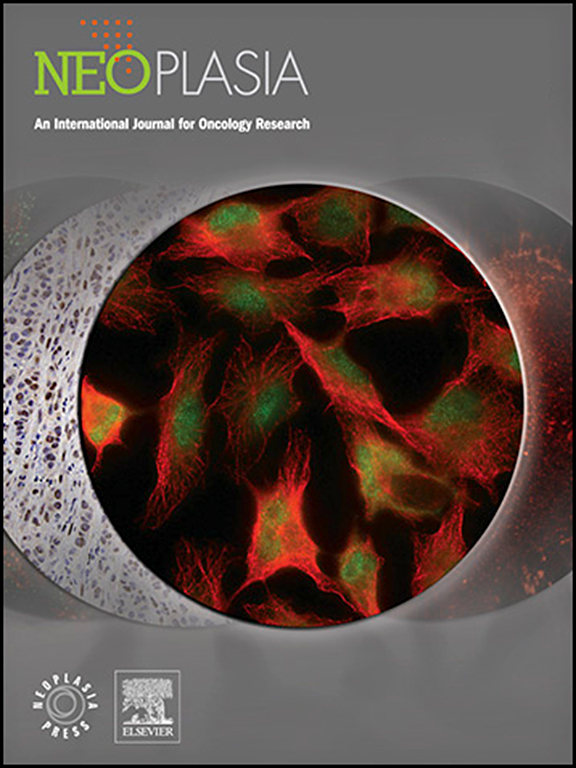Ovulation releases G-CSF to induce peritoneal neutrophil influx and netosis, facilitating peritoneal seeding of high-grade serous carcinoma
IF 7.7
2区 医学
Q1 Biochemistry, Genetics and Molecular Biology
引用次数: 0
Abstract
Introduction
High-grade serous ovarian cancer (HGSC), the most lethal subtype of epithelial ovarian cancer (EOC), often originates from serous tubal intraepithelial carcinoma (STIC) and is typically diagnosed at advanced stages. However, the mechanisms underlying the dissemination of STIC cells into the peritoneal cavity remain poorly understood. This study aims to clarify whether the immune microenvironment triggered by physiological ovulation contributes to this early metastatic process.
Methods
We investigated the link between ovulation-induced peritoneal neutrophil extracellular trap (NET) formation, NETosis, and cancer cell seeding. Peritoneal fluid from humans and mice at various ovulatory stages was analyzed for immune cell composition. NETosis was assessed by neutrophil DNA staining and detection of PAD4 and citrullinated histone H3 (CitH3). STIC-mimicking and HGSC cells were used with or without NET inhibition to evaluate effects on early metastatic seeding.
Results
Ovulatory follicular fluid (FF) robustly induced peritoneal neutrophil recruitment and rapid NET formation via a G-CSF-mediated, ROS/NOX/PAD4-dependent mechanism. NETs promoted cell clustering and anchorage-independent growth through extracellular DNA, while NET-derived soluble factors enhanced cell adhesion and invasion. In vivo, exposure to FF enhanced early intraperitoneal tumor cell seeding, which was significantly reduced by PAD4 inhibition.
Conclusion
Physiological ovulation induces neutrophil influx and NETosis, creating a pro-metastatic peritoneal niche that facilitates both the dissemination and transformation of STIC cells. These findings reveal a novel mechanism linking ovulation to HGSC progression and suggest NETosis as a potential target for early intervention.
排卵释放G-CSF诱导腹膜中性粒细胞内流和网状,促进高级别浆液性癌的腹膜播种
高级别浆液性卵巢癌(HGSC)是上皮性卵巢癌(EOC)中最致命的亚型,通常起源于浆液性输卵管上皮内癌(STIC),通常在晚期诊断出来。然而,STIC细胞扩散到腹腔的机制仍然知之甚少。本研究旨在阐明生理排卵触发的免疫微环境是否有助于这种早期转移过程。方法研究排卵诱导的腹膜中性粒细胞胞外陷阱(NET)形成、NETosis和癌细胞播种之间的关系。分析了人类和小鼠在不同排卵期的腹膜液中免疫细胞的组成。中性粒细胞DNA染色、PAD4和瓜氨酸组蛋白H3 (CitH3)检测NETosis。使用或不使用NET抑制的模拟stic细胞和HGSC细胞来评估对早期转移播种的影响。结果卵泡液(FF)通过g - csf介导的ROS/NOX/ pad4依赖性机制,强烈诱导腹膜中性粒细胞募集和快速NET形成。net通过细胞外DNA促进细胞聚集和非锚定生长,而net衍生的可溶性因子增强细胞粘附和侵袭。在体内,暴露于FF增强了早期腹膜内肿瘤细胞的播种,而PAD4抑制显著降低了肿瘤细胞的播种。结论生理性排卵诱导中性粒细胞内流和NETosis,形成促转移腹膜生态位,促进STIC细胞的传播和转化。这些发现揭示了一种将排卵与HGSC进展联系起来的新机制,并建议NETosis作为早期干预的潜在目标。
本文章由计算机程序翻译,如有差异,请以英文原文为准。
求助全文
约1分钟内获得全文
求助全文
来源期刊

Neoplasia
医学-肿瘤学
CiteScore
9.20
自引率
2.10%
发文量
82
审稿时长
26 days
期刊介绍:
Neoplasia publishes the results of novel investigations in all areas of oncology research. The title Neoplasia was chosen to convey the journal’s breadth, which encompasses the traditional disciplines of cancer research as well as emerging fields and interdisciplinary investigations. Neoplasia is interested in studies describing new molecular and genetic findings relating to the neoplastic phenotype and in laboratory and clinical studies demonstrating creative applications of advances in the basic sciences to risk assessment, prognostic indications, detection, diagnosis, and treatment. In addition to regular Research Reports, Neoplasia also publishes Reviews and Meeting Reports. Neoplasia is committed to ensuring a thorough, fair, and rapid review and publication schedule to further its mission of serving both the scientific and clinical communities by disseminating important data and ideas in cancer research.
 求助内容:
求助内容: 应助结果提醒方式:
应助结果提醒方式:


